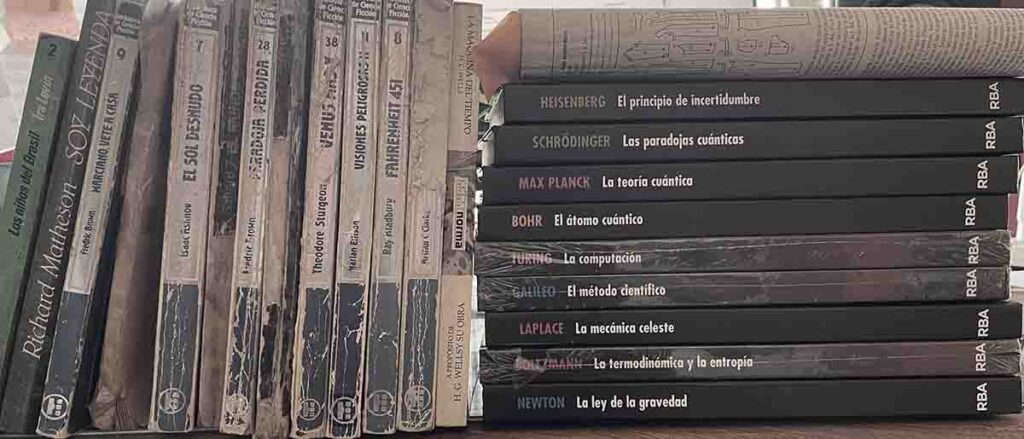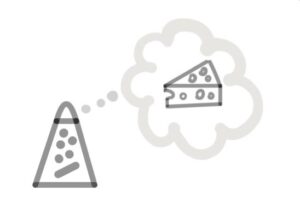Xenakis´music is organized and visceral at the same time. And quoting the Greek (sorry for the easy association!), Xenakis breaks the commonplace conception of Apollo as an opposite of Dionysus. The guts of Dionysus and the arrow of Apollo converse. The warmth of wine, the dance, the beast come together with the intellectual distance, the direction, and predetermination of the archer. Gabriel Valverde, my composition teacher, used to say when talking about Xenakis: "An elephant has passed." An algorithmic elephant, I would say!
Is there an artistic team, apart from yourself, who will write the libretto and / or the adaption of Camus’ novel? Yes. I work in collaboration with: 1) Annette Müller: dramaturge and theater director. She works in different theater productions in Germany. 2) Bart Brouns: He is an expert in the German language with knowledge of French literature. He is also a musician. Working with Annette Müller: The dramaturgy of this opera follows the chronological storyline as in the novel (ex: the funeral, the beach, the prison, the trial). I don’t want to produce a new text based on Camus’ novel but I will use a solid selection of the existent text, which will be the basic structure for my new work. “On the surface, L'Étranger gives the appearance of being an extremely simple though carefully planned and written book. In reality, it is a dense and rich creation, full of undiscovered meanings and formal qualities.” Carl Viggiani It is my aim to follow the story in a linear way looking for richness, mainly in the emotional aspect, from a musical perspective. I want the audience to be able to follow the story linearly but not in a “word
We don’t want to produce a new text based on Camus’ novel but to make selection of the existent text, sung in French with eventual subtitles in German translating but also commenting the actions in a sort of meta-text. The text in this opera works in different levels. Informative clear text: Text that helps to follow the story (as minimal as possible) and to emphasize dramatic contain (see my musical moment “Je t'aime- je ne t'aime pas”, or “Aujourd'hui, maman est morte”. ) Text as texture: singers and ensemble sing and speak texts from the original novel (in French). The text has not to be fully understood; only some significant words stand out from the general texture. Singers and instruments on stage create an intelligible language of an emotional nature[1]. The text is minimal, but that doesn’t mean that it´s not important. Together with Annette Müller and Bart Broens we want to create a substantial filter of the novel, selecting the phrases that, like pillars under a construction, hold the drama in a subtle but effective (and understandable) way. Bart Brouns, expert in German language with a deep knowledge of French literature, is also a musician. His collaboration in this
Musical structure concerning L'étranger, the opera, is shown organized in several scenes which follow the structure of the novel. The soloist, Meursault -preferably a low voice- is in counterpoint with the ensemble. We want a clear straight forward plot, easy to follow in narrative terms, so the audience can concentrate in the subtleties of music and visual design appealing to the audience own emotions and imagination. Each section of the opera establishes a different relationship with the main character and the others in the form of solo, duos, trios, and different choral scenes. Each scene, correspond to a different “stimmung” recomposing the atmosphere by means of music, text and stage design[1]. Written polyphony Camus’ text, creates elaborated polyphonic structures using words. The text does not attempt to organize vertically the voices the way they would be seen in a musical score, but instead tells how they are layered one upon another following a musical logic. The polyphonic structures, although expressed through words, create in Camus´ complex scenes in relation to traditional musical forms: soloist and choir, coro spezzato (Venetian choir ala Gabrielli), spread choir (ala Stockhausen in Licht), etc. “Choir” in our proposal means the confluence of instruments/objects and voices.
L'étranger, evidences the strangeness of Meursault within their social environment as a metaphor of the man in relationship with society. In a dialectical relationship with the world around, the opera faces a soloist against the ambiguous world around. In our work the outside world is represented by singers, instruments and objects. As in the novel, in our opera, Meursault carries the action. The rest of the singers have exchangeable roles (each singer represents more than one character): Maria, Celeste, Salamano and his dog, Raimundo, the lawyer, the judge, the journalist, etc. This exchange-ability of roles also represents the indeterminacy and fuzziness of the world around Meursault. Silence is also a very important aspect in L'étranger, as a metaphor of apathy and strangeness. Our soundscape swings back and forth from an austere speechless character to polyphonic crowded scenes referring to the multitude of voices around (and inside) Meursault´s head.
A careful reading of L'étranger shows that Camus experimented with certain structures and patterns that can be affiliated with music. L'étranger can be read as a musical score: concerning the form, the novel infers a musical logic in terms of structure and motivic development. It also contains innumerable sound-effect descriptions, which, apart from their direct sound references, provide a narrative rhythm which contribute to the creation of a deep psychological atmosphere close to the ones we find in traditional operas. The awareness of the architecture of music is significant in relation to his own ability to create music-like structures in his writing […] in relation to Bach´s art of composing particularly the aspect that emphasize complex, multilayered contrapuntal relationships. Opera, is a perfect media to transmit philosophical concepts, because it is an art that is not beyond words, not without them, but in between words. Following Camus´ existential journey through the human condition, this proposal is not willing to describe Camus´ philosophy of absurd, but to build a Stimmung where the audience can reflect on that concept, instead of into the explanation of it. An opera can create complex and psychological landscapes, which transmitting feelings rather than intellectual statements. The
para Gabriel Abellán Today, I began my day by reading a post on Gabriel Abellán´s blog (in Spanish), a blog devoted to physics and music under both a very smart and poetic perspective. In his latest post, Gabriel shares with us, how a logic class, taught by an inspiring teacher, changed him forever. Emphatically, I remembered my father teaching me math when I was in kindergarten. https://labellephysique.wordpress.com/2022/05/06/logica-y-norealidad/ Science and science-fiction From my last visit to Argentina (I live in Amsterdam) I brought a suitcase full of books: 23 kgs of precious books. I "stole" from the family bookshelf the science-fiction collection that belonged to my father. I also brought a very inexpensive (but super heavy!) collection of science books that I bought in calle Corrientes, a street in Buenos Aires, very well known for its amazing bookshops. I am sure that the pioneers of relativity theory with their wild imagination deeply pleased Asimov and Bradbury. Wells traveling on time, and Philip Dick, with his multiple worlds, both of them speak the same language than the realities glimpsed by quantum physics scientists. In the corner of the music, Stockhausen comes to my mind too… maybe it is true that he comes
My recent piece Boxes belongs to a collection of pieces under the name “Acoustics of everyday” focused on explicit issues related to classical acoustic: resonance boxes, strings, mutes, filters, microtonality, and other subjects to come. I had a wonderful adventure with ensemble Modelo62, which included 3 concerts + a recording session, plus shared rehearsal time. In all those instances I could deepen my questions about this new chapter in my music. Boxes is mainly focused on the subject of space. Different resonance boxes are in dialogue between themselves, but also, in dialogue with the big box around that is the room itself. In a series of concentric layers, my first concern about space starts with the same architecture of the piece. How? 1. Composing different spaces within the piece by grouping instruments by color and/or behavior (orchestration). 2. Establishing the role of the instruments (solo, tutti, ensemble) 3. Composing their interaction in a combo music/space (soloist, duplications, hoquetus, etc) 4. Boxes ask what is sounding, when, and where at the same time. 5. Choosing the musical materials both in terms of time and space: repeated notes freeze the time, while ever looping scales move the time in circles; repeated notes
A cheese grater is being played with a toothbrush. After a while, we completely forget the cheese grater and we can focus only on the sound. The continuous fricative noise is colored by mini sparks of high frequencies, short and loud. That sound progressively becomes a ghost, a bunch of confused energy not attached to a specific physical body. The sonic outcome is different from the sounds produced by the object when in the kitchen. The grater-thing, as a lost map, with its metallic perimeter, embrace new sounds floating in the sea of abstraction. Deep listening is in conflict with what the eyes and/or the ears have to offer: is it really a cheese grater or a camouflaged synthesizer? It is known that synthesizers can efficiently produce a broad variety of sounds, they may also change the way they look, “not what it sounds, the car, the instrument, the voice, but what sounds as sonic materiality and sense” S.Voegelin I like the conflict that the grater brings on stage when not performing “spaguetti” but the most beautiful sounds ever. La râpe à fromage doit être frottée avec un baguette de Triangle/ The cheese grater should be rubbed with a
Musique concrète makes music with second-hand objects, mostly bought in the markets or rescued from the trash. Two performers manipulate sound objects and slide-projectors in different spots of a dark room, producing performative installations in dialogue with the architecture of the space. Music, sound, and space design are organized in a score creating complete audiovisual scenes with simple means.





